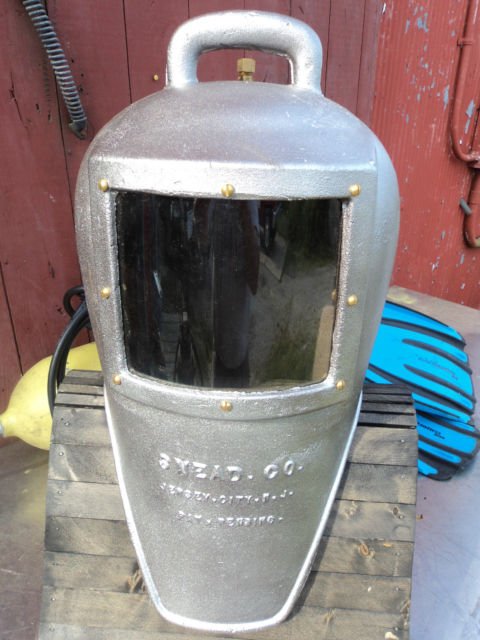You have 0 product(s) in your cart.
Abyss Scuba Diving
Snead Shallow Water Diving Helmet

SNEAD shallow water diving helmet comes down-under to Sydney for a dive.
Today I have secured a piece of forgotten diving history. A piece of equipment so barbaric it almost looks like science fiction. Weighing in at nearly 30kg, and made from a single piece of specialised, rust resistant cast iron, the Snead Style III Shallow Water Diving Helmet is something out of this world. It really needs to be seen to be believed.
I located it in Onancock on the coast of Virginia in the United State of America. This is just 50km from the world’s largest naval base, in Norfolk, where it probably was originally commissioned for use.
It had been in a private collection for more than 40 years. In its fully restored and working condition, this Snead Style III Shallow Water Diving Helmet just had to be mine.
I paid for it today and because of the weight of the dive helmet, we have needed to arrange for it to be shipped to Australia via sea freight. So we will have it in our hot little hands in just less than 2 months. Check out the photos of the Snead Style III Shallow Water Diving Helmet we have purchased.
History of Snead Style III Shallow Water Diving Helmets
The development of the diving helmet started with the Deane brothers in 1823. They used an open helmet which was made for them by Augustus Siebe. This helmet flooded when the diver bended over so it was not a very easy way to dive. The open helmet was used until 1837, when Augustus Siebe patented the first closed diving system. From this moment, the complete diving suit pushed the open helmet aside; slowly but surely the open helmet felt into oblivion.
In the beginning of 1900, the open helmet returns at the diving scene in the U.S. Well knows manufacturers were Miller Dunn, Morse, Schrader, Desco and of course Snead. These helmets were made from cast iron, copper or bronze and were used by biologists, researchers, underwater explores and artists.
The open helmets stayed in use at several places, for instance at the US Navy, where this helmet got it’s nick name: the shallow water helmet. You probably wonder how this nick name started. By that time the US Navy used the heavy Mark V helmet which consisted of the diving helmet, suit, shoes and weights. This full suit was often referred to as deep sea diving suit. It was ideal for diving in deep and cold waters. When a diver had a short diving job, the divers often used only a helmet like this and not the whole diving suit. Mostly this was in clear, warm and shallow waters. That’s how it got its name, and the shallow water helmet was fully developed.
During the 40’s and 50’s, new diving equipment became available; scuba gear. First for military and commercial use, in the 60’s it became available for everybody. This equipment conquered the diving scene, once again pushing the open helmet aside. The development of new materials like composite and glass fibre were the replacement for copper, cast iron and bronze. New manufacturers like Kirby Morgan conquered the military and commercial markets. Divers using the good old metal diving helmets became a curiosity. And when items become a curiosity, people start collecting it……
There is a Snead Style III Shallow Water Diving Helmet displayed in the US Naval Undersea Warfare Museum in Washington, near Virginia where this Helmet was purchased from.
The Snead factory was located in Jersey City, New Jersey. Helmets were made between the beginning op 1900 until 1940. In total, 4 different styles were made. Style one was cast in two pieces. This style is recognisable by it’s screws on the flange. The second style has a flange also, but no screws. Both had a large faceplate and an air inlet on top of this faceplate. These helmets had a weight of approximate 56 pounds.
The company tag reads:
SNEAD.CO. JERSEY CITY N.J. PATT. PENDING.
The third style, which is the type I have purchased has no flanges at all and the faceplate was much smaller than the style 1 and 2. The air intake was placed on top of the helmet, behind the handle bar. This helmet was slightly heavier: approximate 62 pounds. The company tag is the same as the style 1 and 2, except there is only one T in PATT.
Style 1, 2 and 3 were made from cast iron.
Style four was made from bronze with a weight of approximate 70 pounds. It has the same tag as in style 3. It is known that there are reproductions made of this fourth style so if you are offered one, contact a professional.
Well there it is, pretty cool hey! I am so excited to have secured a piece of underwater explortion history and no doubt you will all be seeing some photos when it arrive here in Sydney!
Recent Posts





